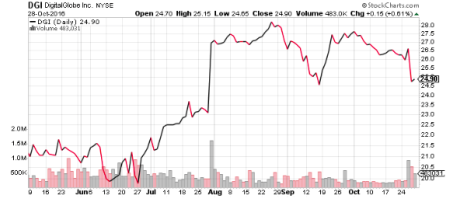Why Buy Stocks Hitting New Highs?
A great way to find the best growth stocks is to run through the list of stocks hitting new highs. If you want to own stocks thatwill go up, what better way to find them than look at stocks that are already going up?
Skeptics will complain, “But those stocks are too high; I want stocks before they go up.” But savvy growth stock investors know that momentum persists (that was Newton’s first law) and they’re happy to jump on board stocks that are high and going higher.
Plus, an examination of the new highs list can give you a sense of what, in general, the market is favoring these days.
Late last week, for example, a run through the list revealed two main trends.
First, financial stocks are favored, which suggests that investors as a whole are anticipating higher interest rates.
Second, there are a bunch of technology companies that serve government security/defense efforts that are hitting new highs! Conclusion: investors in these companies are betting on increased federal spending in these areas. (It’s certainly likely that either Presidential candidate would increase such spending.)
[text_ad]
The trouble is, most of these stocks are not particularly liquid, and without institutional support, volatility can be elevated.
Still, for your review, here are two companies that are worth a look. They’re two of the best growth stocks going at the moment.
DigitalGlobe (DGI), located in Westminster, Colorado (a suburb of Denver), boasts “the world’s most sophisticated satellite constellation in orbit,” creating “the world’s smartest images.”
These are high-resolution photos, frequently refreshed, that can be used by farmers, oil companies, mapmakers, environmentalists, navigation specialists, civil agencies and, most important of all, the defense industry.
In fact, currently, 64% of revenues come from the U.S. government, while 36% come from a diversified group of commercial users.
In the third quarter, commercial revenue grew 8.0% while U.S. government revenue grew 3.2%, for a combined growth rate of 5.0%. EPS grew 75%, to $0.21 per share, while net profit margin grew to 8.0%, the best in years.
Equally important, the company gave more guidance on its recent announcement of the acquisition of Radiant Group, a “leading provider of geospatial solutions to the U.S. intelligence community,” and confirmed that the National Geo-Spatial Intelligence Agency had awarded the company a contract for the Global Enhanced GEOINT Delivery Platform (Global-EGD). Also, the company repurchased $9.6 million of its own stock during the quarter.
Trading volume of the stock is a bit light at 271,000 shares per day, but the chart is intriguing. The stock hit new highs on big volume after the earnings announcement, but was pulled back down the next day—on much lighter volume. I’ll be keeping an eye on it—but I’m not recommending it today.
Mercury Systems (MRCY), based in Chelmsford, Massachusetts (a suburb of Boston), makes processing subsystems for the defense and intelligence industries. These systems (hardware and software) transform real-time radar, video and signals intelligence data into information for analysis and interpretation.
The company’s traditional strengths include radar, but its cutting edge work involves open-architecture radio frequency and microwave technologies.
Lockheed Martin and Raytheon account for 46% of Mercury Systems’ revenues, and there’s no doubt that much of theiroutput goes to the U.S. government.
In its fiscal first quarter, ended September 30, revenues grew 50% from last year to $87.6 million (there was a major acquisition; without it, revenues would have grown 8.4%), while earnings per share grew from $0.08 to $0.10.
After that earnings report, MRCY gapped up from 24 to close above 27, and the next day it held the gain, a very positive sign. Volume on the big day was 900,000 shares, while until then the average had been 175,000, rather light. And as with DIGI, I’ll be keeping an eye on it—but I’m not recommending it today.
A Big Stock Hitting New Highs
Getting back to the topic of the best growth stocks hitting new highs, there is one stock hitting new highs in recent days that has great liquidity. Institutions love it, and it has the potential to grow for many more years!
That stock is Nvidia (NVDA), a growing powerhouse in the video business; its chips are increasingly found in anything involving video. But Nvidia doesn’t make chips; it just designs them, and licenses those designs to manufacturers.
In the second quarter, Nvidia grew revenues 24% to $1.43 billion, and grew earnings 56% (wow!) to $0.53 per share.
As for the third quarter, results aren’t out yet; they’ll be reporting on November 10. Analysts’ consensus is for EPS of $0.56, which would be a gain of 40%.
Here’s what the chart looks like now.
Average daily trading volume is nine million shares.
So should you buy it?
In general, yes; the stock is trending strongly up, and institutions are growing increasingly enamored of it. But buying just before an earnings report is often chancy; it’s like rolling the dice.
What you really should have done is buy NVDA back on February 22, 2016 when Mike Cintolo recommended the stock in Cabot Top Ten Trader at a price of 31! Mike’s readers are now looking at profits of 300+%, and when he tells them to sell and buy the “next” Nvidia, you can bet they’ll be listening.
[author_ad]





